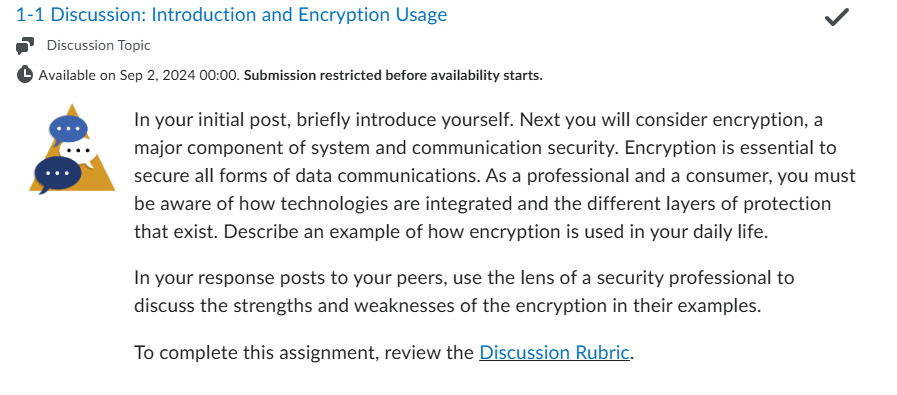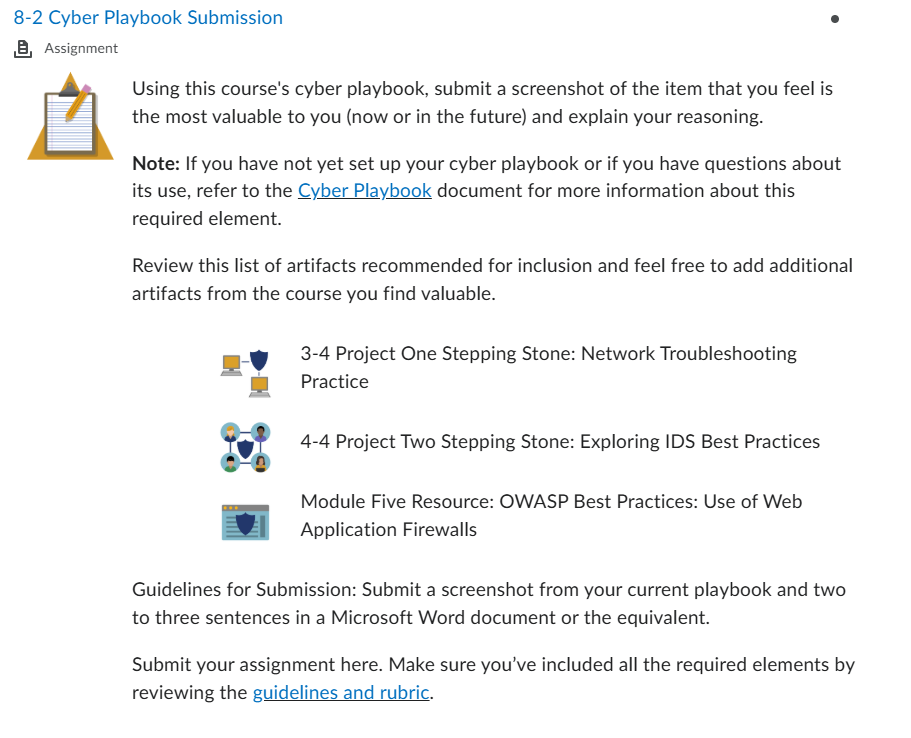
System and Communication Security Paper
Overview
As you have learned, this course employs a targeted approach to measuring your mastery of the course competencies. Your competency project for this course is a composition demonstrating mastery of the key skills in automating security-relevant tasks, implementing public key infrastructure (PKI) technology using a certificate authority (CA) server, and hardening computer systems. PKI is a common protection technology used in the industry and comes in many different forms. Using a CA server is one method that provides security to a large infrastructure. Important skills for a security analyst are automating security controls to save time and resources. This can be done through hardening scripts and system checklists.
The project is divided into three milestones, which will be submitted at various points throughout the course to scaffold learning and ensure quality final submissions. In Milestone One, due in Module Three, you will develop an automated script and submit your Milestone One Worksheet. In Milestone Two, due in Module Four, you will submit your completed checklist and analysis Word document. In Milestone Three, due in Module Five, you will submit your Milestone Three Worksheet. The final product will be submitted in Module Seven. Some of its parts will require the CYB 300 Sandbox environment.
In this assignment, you will demonstrate your mastery of the following course competencies:
- Implement a public key infrastructure (PKI)
- Securely configure (harden) a common computer operating system according to appropriate security standards and organizational requirements
- Use a scripting language to automate security-relevant tasks
Scenario
Part I
In Milestone One, you developed a script to create a baseline for newly acquired computer assets. In this project, some of these assets are being relocated to a remote location with additional requirements. Develop a script to implement this new baseline configuration to meet the following requirements:
- Rename computer to First Initial_Last Name (use your first initial and your last name)
- Change time zone to the time zone associated with Denver, Colorado
- Get a list of running processes
- Set idle lock time for screensaver to 3 minutes
- Send the output of the last 50 entries in the /var/log/messages log to a text file named “SecurityLog_LastName.txt”
Part II
For this part, you will document the commands to create a CA. As a result of relocation, in addition to the scripts associated with the baseline hardening, you need to create a new CA for this remote location that meets the following set of security requirements:
- Hash value = SHA256
- Key type = AES 256
- Key length = 4096
- Common Name = CN = Colorado Office Root, C=US, ST-CO,O-your_name-Org
- Validity period = One Year
Part III
For this part, you will discuss the importance of industry guidelines, organizational baselines, and checklists as they pertain to system and communication security.
Prompt
You must address the critical elements listed below. Most of the critical elements align with the competencies (shown in brackets).
- Automated Hardening Scripts: Compose a single executable script to automate hardening tasks to meet the requirements in the scenario.
- Screenshot of a single executable script in the Linux shell environment
- Screenshots that evidence each requirement has been met
- One of the main reasons that practitioners use automated scripts is to save time by avoiding manual configurations. Describe additional benefits of using automated scripts for configuring systems in a secure manner for organizations.
- Certificate Authority:
- Provide a screenshot of the OpenSSL commands to create a CA with settings that meet the organizational requirements
- Discuss how to create Certificate Signing Requests (CSRs) for the servers and workstations in the new location and submit to the CA for approval (CA Applied)
- Discuss how implementing PKI addresses two of the Fundamental Security Design Principles and how this maintains the tenets of the confidentiality, integrity, and availability (CIA) triad in an organization
- Hardening Systems:
- Discuss how to make the transition from industry guidelines to a baseline that is appropriate for your organization
- Create an operating system security-configuration checklist representing the elements used in Part I: Automated Hardening Scripts
- Explain why operating system security-configuration checklists are an important part of the cybersecurity practices in an organization










